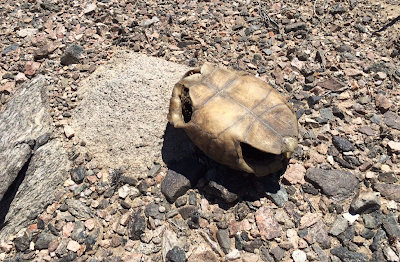Unlikely Allies: Trump Administration Joins Enviros to Plan Solar Project on Prime Tortoise Habitat

The Trump Administration this month released an assessment that concludes that a solar developer can crush and mow vegetation across several square miles of prime desert tortoise habitat, and still consider those lands as viable habitat for the species. The silence of some national-level environmental groups regarding the unconventional and unscientific conclusion appears to signal their comfort taking risks with a species already facing significant peril, as well as these groups' inability to champion more sustainable locations to generate clean energy in Nevada. The biological opinion released by the Trump Administration constitutes the official position of the Fish and Wildlife Service regarding the impacts of the proposed Gemini Solar project; its curious willingness to declare heavily disturbed lands as viable tortoise habitat was necessary for the project's approval because the project would be built on lands that have been identified as a vital habitat linkage sustai...






